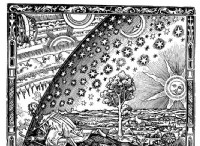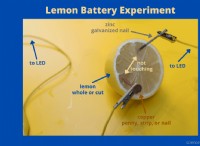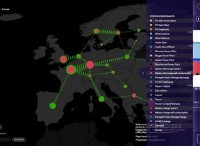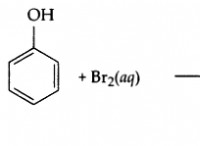結び目が何であるかは誰もが知っています。しかし、結び目の性質は、DNA の生化学、新素材の合成、3 次元空間の幾何学など、幅広いトピックに隠された秘密を解き明かすのに役立つため、結び目は数学と科学において特別な意味を持っています。このエピソードでは、ホストのスティーブン ストロガッツが、仲間の数学者であるコリン アダムスとリサ ピッチリーロと共に結び目の謎を探ります。
Apple Podcasts、Spotify、Google Podcasts、Stitcher、TuneIn、またはお気に入りのポッドキャスト アプリで聴くか、Quanta からストリーミングできます .
トランスクリプト
スティーブン・ストロガッツ (0:03):私はスティーブ・ストロガッツです。これはThe Joy of Whyです 、Quanta Magazine のポッドキャスト それは、今日の科学と数学における最大の未解決の問題のいくつかにあなたを連れて行きます.このエピソードでは、ノットについて話します。
私たちは皆、結び目が何であるか知っていますよね?靴ひもを結ぶ結び方や、荷物を車の上部に固定するために使用する結び目のようなものです。自由端が 2 つある紐に結び目を作ると、そのような結び目がほどけることがあります。場合によっては、自由端が緩み、結び目がほどけることがあります。しかし、両端を融合させて接着すると、結び目はそこに固定され、ループに閉じ込められます.次に問題は、ループを巧みに操作したり小刻みに動かしたりして、紐を切らずにループの結び目を取り除くことができるかということです。
まあ、できれば、それほど難しいことではありません。それは単なる円であり、単純なループに相当するものであり、数学者が「些細な結び目」として片付けているものです。しかし、元に戻すことができない場合は、もつれたループをどこまで単純化できるかなど、さまざまな疑問が生じます。
数学者は、さまざまな種類の結び目をどのように区別していますか?ノットには何種類ありますか?では、なぜ数学者や科学者は結び目を気にするのでしょうか?結局のところ、結び目理論と呼ばれるこの数学の分野には、実際のアプリケーションがたくさんあります。それは約 150 年前の化学元素の謎から始まりました。当時、それらはエーテルに結ばれたさまざまな種類の結び目であると考えられていました。今日、結び目理論は、酵素がどのようにして結合した DNA 鎖を解くことができるかを理解するのに役立っています。また、結び目理論は、基礎研究において、一部の化学療法薬を含む新しい種類の医薬品を作成する可能性を秘めています。しかし、数学自体では、結び目理論は数学者が高次元空間の謎を解明するのに役立っています.
結び目にまつわる謎の解明に協力してくれるのは、Colin Adams です。彼は、ウィリアムズ カレッジの数学の Thomas T. Reed 教授であり、Journal of Knot Theory and Its Ramifications の編集長の 1 人でもあります。 . Adams はコミック本 Why Knot? も書きました。 後で、Lisa Piccirillo と話します。彼女はマサチューセッツ工科大学で数学の助教授を務めており、最近、コンウェイ結び目と呼ばれる結び目に関する長年の数学のパズルを解きました。実際には彼女が大学院生だったときです。コリン・アダムス、本日はご参加いただきありがとうございます。
コリン・アダムス (2:35):ああ、ここにいるのは本当に楽しいよ。招待してくれてありがとう。
ストロガッツ (2:38):そうですね、コリン、私はあなたの作品の大ファンです。ノットに関するあなたの本が大好きです。私は彼らから多くのことを学びました。では、結びと結びの理論を簡単に紹介しようとしましたが、靴ひもを結ぶこと以外で結びについて聞いたことがない、または考えたことがない人にどのように説明したらよいでしょうか?
アダムス (2:55):ええ、つまり、数学のこの分野にいることの大きな利点の 1 つは、通常、飛行機で誰かの隣に座って、「あなたは何をしますか?」と言う場合です。 ?」あなたが数学者なら、彼らに自分のしていることを説明するのに非常に苦労するでしょう。しかし、私にはこの大きな利点があります。靴ひもを外すことができ、靴から外すことができ、引き上げることができます。そして、この靴ひもに結び目を作ることができ、2 つを接着することができます。それから私はその物体を調べて、それが本当に結び目であるかどうかを判断することができます — あなたが説明したように、スティーブ — それは本当に結び目ですか?それともそうではありませんか?切らずにほぐしてもらえますか?
これは非常に難しい問題です。つまり、あなたが持っていると想像することができます.そして彼らはあなたに質問をします、あなたはそれを解くことができますか?そして、あなたはそれを解きほぐすために次の6年間を費やします.そして6年後、あなたは成功していません。しかし、あと 5 分間作業すればうまくいくかどうかはまだわかりませんよね?ですから、成功するかどうかを判断できるいくつかのテクニック、数学的テクニックをぜひ身につけていただきたいと思います.
ストロガッツ (3:28):結び目は私たちの周りにたくさんあります。現実世界に現れる他の例をいくつか挙げていただけますか?
アダムス (4:00):ええ、つまり、ノットは非常に長い間存在しています。実際の有用性、科学の観点から、あなたが挙げた非常に良い例は、DNA の例で、DNA は細胞の核の中にあります。そして、それはすべてそこに詰め込まれています - 人々はそれをバスケットボールに100キロの釣り糸を入れていると表現しています.そして、そこにはこの巨大な混乱があります。それでも、転写、組換えを行うことができなければなりません。それ自体から切り離すことができる自身のコピーを作成できなければなりません。そして、それにはこれらの酵素が必要であることが判明しました。あなたが言及したように、これらの酵素は細胞の核内にあり、酵素が2本のDNA鎖を取り、1本をもう1本のすぐ隣に引っ張り、1本を切り開いて押し出すことを可能にします。交差変化の結び目理論と呼ばれるものを作ります。これは、これらの酵素が実際に DNA に対して行っている間、常に私たちの内部で起こっています。酵素がそれを行うのを止めれば、それは DNA が自分自身を再作成するのを防ぎます。それが実際にこれが現在化学療法で使用されている理由です.酵素が DNA に作用し、結び目と結び目を解くのを防ぐこれらの化学療法薬があります。これは、結び目が DNA にどのように現れるかを示す例です。
私が非常に興味深いと思うもう 1 つの例は、合成化学です。合成化学では、新しい分子を合成しようとしています。そして、すべてが結合した一連の原子で構成された分子があり、それがサイクルを形成していると想像してください。これは、実際には分子レベルにある些細な結び目の例です。ささいな結び目を切り開き、分子レベルで結び目を作り、2 つのゆるい端を接着することを想像してみてください。そして、それが完了すると、同じ構成原子がまったく同じ順序で結合されます.以前の物質には結び目がありませんでしたが、今では新しい物質、結び目のある物質があります。
したがって、持つことができる結び目の種類ごとに — その数には制限がありませんが、交差数が少ない場合でも、数百万と数百万になります — それらの結び目のそれぞれが今、新しい物質になります。したがって、合成化学者はこの考えに唾液を垂らしています。そして彼らは、分子レベルで結び目を作る方法を考え出すために懸命に取り組んでいます.
ストロガッツ (6:09):学部生の頃を思い出します。私が有機化学のコースを受講していたのは、両親が私に医学予備校になるよう熱を上げていた時期でした。それで、私は他のすべての予備医学と同じようにオルゴ [有機化学] を服用していました。私は、数学が好きな人として、私たちの教授があなたが説明したことについて話したことに本当に魅了されたことを覚えています.しかし、その時点では、それは仮説に過ぎませんでした。当時、彼らは合成的に分子を結びつけたり連結したりする方法を知りませんでしたが、彼はそれについて考えるのは興味深いと言いました.あなたが言うように、あなたが知っているように、水素と炭素を含むポリマーである可能性があり、それらはまったく同じ原子を同じ配置で保持し、それぞれが以前と同じ隣人を持つことができます。しかし、結び目が結ばれているため、トポロジカル異性体である異性体を作成できます。しかし、それは異なる化学的性質を持っているでしょうか?
アダムス (6:58):ええ、一般的に期待されているのは、答えはイエスです。異なるプロパティを持つべきです。そして、ご存知のように、一方はオイルのように機能し、もう一方はまったく異なる機能を果たしている可能性があります.興味深いことに、海軍は実際にこれに関する多くの研究に資金を提供しました。それは、レーダーを回避するために潜水艦をコーティングできる新しい物質を考え出すことに非常に興味を持っていたためです。ですから、そこから多くの資金が得られたのは興味深いことです。
ストロガッツ (7:22):冗談じゃない。
アダムス: これを研究するために、ええ。
ストロガッツ: 一種のステルス技術のように.
アダムス: うん。
ストロガッツ (7:27):うわー、ステルス サービスのトポロジー。へー、それは聞いたことがありませんでした。いいですね。
化学や軍隊などの分野の人々、または化学療法薬を扱う医師が、この種の結び目の問題を気にする理由がわかり始めています.しかし、なぜそれらは数学的に興味深いのでしょうか?
アダムス (7:46):結び目理論は、トポロジーのより広い分野のサブフィールドです。トポロジーは、オブジェクトをゴムでできているかのように扱う数学のこの領域です。たとえば、球を立方体と同等と見なすことができます。これは、切り取りや貼り付けを行わなくても、6 つの角を引き出して球を立方体に変換できるためです。そして、ドーナツ、ドーナツの表面、トーラスに相当するものを考えてみましょう — 有名な例はコーヒー カップに相当します。なぜなら、コーヒー カップの表面を変形させることができるからです。ドーナツの表面のようでした。したがって、それらは同じと見なされます。
つまり、トポロジーは数学の非常に広い領域です。結び目理論は実際にはそのサブフィールドです。繰り返しになりますが、これらの結び目は空間にあるものとして扱っていますが、実際にはゴムの結び目であるかのように扱われ、変形することが許可されています。したがって、結び目理論に関する質問を理解することは、実際には、トポロジーに関する質問に一般化できる特定の質問をしているということです。
ストロガッツ (8:50):これは非常に興味深い違いです。あなたが作成している重要な違いです。このアイデアは、数学者が考えるのを好む結び目であり、この種の理想化されたゴムのような性質を持っており、ねじったり、ねじったりすることができます。好きなだけ曲げたり、変形させたり、伸ばしたりします。実際、現実の世界と同じように、人々が結び目について考えるとき、靴ひもの結び目を例に挙げてみましょう。実際の結び目はしばしば摩擦に依存するなど、数学者が無視しがちな側面が他にもあります。では、数学者として結び目を考える際に省略したいことをすべて教えてください。
アダムス (9:24):ええ、いいえ、それは素晴らしい質問です。ええ、数学者として考えると、結び目は面白いです。たとえば、あなたが考えていることの1つは、結び目が無限に薄いと考えている場合、それは切り開いて結び目に結ばれた円と考えている.しかし、その円の厚みは 1 ポイントです。つまり、結び目理論を考えるときに実際に検討しているのは、非常に細くて薄いものです.そして、前に言ったように、それを切り開き、結び目を作り、端を接着します.そして、それを好きなように変形させることはできますが、いつでもそれ自体を通過させることはできません.これは、私たちが使用しているルールの 1 つです。
わかりにくいルールがいくつかあります。同様に、靴ひもでできるように、靴ひもに小さな結び目を作ることができるようになるまで、結び目を作ってから締めて、どんどん小さくなっていくことはできません。許可されていません。結び目理論でそれを行います。それを回避する方法の 1 つは、それが区分線形と呼ばれるものであるということです。したがって、すべての結び目は、実際には結び目を作るために端と端を接着した小さな棒の束から作られていると想像できます。棒の数を際限なく増やすことはできません。数を維持する必要があります。常に有限数に固執します。そして、それはあなたの結ばれた円の中にますます小さな結び目を持っているというこの問題を回避します.以上が、結び目を数学的に説明するために必要ないくつかの条件です。
ストロガッツ (10:44):たとえば、結び目理論を勉強することで、数学ではどのようなことが学べるのですか?ここで私が探しているのは、それが空間や代数について何を教えてくれるのかということです。または、ご存知のとおり、結び目理論について考えると、数学内でどのようなつながりが得られるのでしょうか?
アダムス (11:00):結び目理論で誰かがあなたに尋ねるかもしれない最も基本的な質問は次のとおりです。これは些細な結び目ですか?したがって、結び目が自明な結び目であるかどうかを判断できるようにする必要があります。
より一般的には、誰かがあなたに 2 ノットを渡します。そして、あなたはそれらが同じ結び目であるかどうかを知りたいですか?それらは同じ結び目ですか、それとも異なる結び目ですか?これも基本的な問題の 1 つです。 1880 年代から人々が取り組んできた問題の 1 つは、すべてのノットの表を作成することです。ここでは、すべてのノットの表を、ある程度複雑になるまで作成しようとします。ノットを集計する際には、クロッシングの数を追跡し、特定の回数のクロッシングを持つノットの数を決定しようとすることで、ノットを集計します。
交差とは、結び目の写真を撮ってその写真を見ると、結び目がそれ自体の上または下に交差する場所があることを意味します。 .そして、それらは私たちが交差点と呼ぶ私たちの場所です。これで、3 つの交差する結び目がいくつあるかがわかります。三つ葉結びと呼ばれる結び目は 1 つだけです。自明な結び目は、交差がゼロの唯一の結び目です。そして、あなたは持つことができます - 4クロスノットが1つ、5クロスノットが2つ、6クロスノットが3つ、7クロスノットが7つあり、そこから上に行くことができます.これまでのところ、考えられるすべての結び目を最大 19 の交差まで表にしました。そして、最大 19 の交差まで、3 億以上のノットがあります。そして、これは人々が行うことの 1 つです。可能性は何かを理解しようとします。特に、そのうちの 2 つが与えられた場合、それらが同じかどうかをどのように判断しますか?
(12:33) さて、それを行うために、不変条件と呼ばれるこれらの量を作成します。そして、不変量は、結び目の図に関連付けることができる量にすぎません。また、2 つの異なる図が同じ結び目を表している場合、それらには同じ量が関連付けられている必要があります。その数量は数値にすることができます。代数の場合は、グループにすることができます。それは数学の別の種類のオブジェクトかもしれませんが、結び目を区別する方法です.
たとえば、博士号を取得してから取り組んできた分野の 1 つは、はノットの双曲線体積であり、ノットを区別するための非常に強力な方法であることが判明しました。私がそのことに言及する理由は、スティーブ、あなたが前に尋ねていたように、結び目理論は数学の他の分野とどのように結びついているのですか?結び目の双曲体積は、実際には双曲幾何学から生まれます。したがって、これは幾何学的不変量です。結び目自体は変形可能なオブジェクトであり、私はそれらをゴムでできていると考えています — トポロジカルという用語を使用しているのは、それらがゴムであり、簡単に変形するためです — しかし、双曲線ボリュームのうち、双曲線である結び目に関連付けられている一意の数値です。
たとえば、交差が 4 つある結び目の双曲線体積は 2.0298 です。小数点以下の桁数は任意です。そして、その数を使用してノットを区別できます。しかし、結び目理論のその領域を理解するには、幾何学と代数を理解する必要があります。基本群と呼ばれる結び目に関連する群は、実際には双曲空間の等長の集合として実現されるからです。距離を保持するマップであるアイソメトリ。したがって、代数を理解する必要があり、いくつかの分析を理解する必要があり、いくつかの幾何学を理解する必要があります。そのため、ノットを理解することを目的として、さまざまな分野の数学をまとめています。
ストロガッツ (14:26):invariant は通常の英語で最も一般的な単語ではないかもしれませんが、署名や指紋などのようなものと考えることができます.
アダムス (14:33):とても有名な例がありますが、これは興味深い話です。 1890 年代に、当時ネブラスカ州立大学と呼ばれていた C. N. リトルという名前の数学者がいて、10 回の交差のすべての結び目を表にしようとしていました。そして、彼はこのリストを作成し、10 回の交差の 166 ノットのリストを作成しました。そして、そのリストは 1975 年まで存在していた、と私は思う.
そして 1975 年、ニューヨーク出身のアマチュア数学者、ケン パーコというニューヨーク出身の弁護士がいました。そして彼はノットのテーブルを見下ろしていました。そして結び目の多くは、アレクサンダー多項式と呼ばれる不変式を使用して区別されていました。そして、結び目のうちの 2 つが同じアレクサンダー多項式を持つことに気付きました。それで、彼はひもから 1 つの結び目を作り、それを再配置しました。そして、それは他の結び目と同じであることが判明しました。そして、表は 75 年間間違っていたことが判明しました。そして、実際には、これらの 2 つの結び目は同じ結び目でした。そして、そのノットのペアは、実際には 1 つのノットであるにもかかわらず、依然として Perko ペアとして知られていますが、表では Perko ペアと呼ばれています。
ストロガッツ (15:40):Perko ペアの例が大好きです。つまり、この主題の数学的側面について、非常に繊細で魅力的なことを正確に要約しているということです。あなたが言うように、この例は 70 年間、表の中に潜んでいた可能性があります。これらを見て、その結び目とは違うように見えると思った人の数を誰が知っていますか.どちらも 10 個の交差点がありますが、同じにする方法がわかりません。だから誰も考えなかった。
結び目理論は幾何学とトポロジーにおけるあらゆる種類の深い問題に関連していると以前おっしゃいましたが、今こそ、その空間について話し始める良い機会だと思います。結び目を囲みます。右?つまり、結び目理論はループだけではありません。しかし、それは 3 次元空間にあるループです。あるいは、場合によっては、結び目の理論家は、4 次元空間で結ばれたものについて考えることが役立つと考えています。それでは、その一部についてお話しましょう。
アダムス (16:34):ええ、いいえ。ですから、それは一種の基本的な質問です。当初、結び目理論では、誰もが 3 次元空間に住む結び目について考えていました。それは私たち全員が住んでいる自然な空間だからです。スペース、6 スペースで結ばれた 4 次元の球。
そして、次元、次元、次元を上に行くことができます。また、4 つのスペースで結ばれた円を考えることもできます。そして、それは本当に興味深いカテゴリです。したがって、4 空間の結び目がある円の場合、4 空間のすべての結び目がある円は結び目を解くことができることがわかります。したがって、すべての結び目は、4 スペースまで上がると自明な結び目になります。すべての結び目は 4 空間でもつれを解くことができるという事実のために、4 次元に上がるとすべての結び目理論が崩壊するため、4 空間での結び目のある円ではなく、4 空間での結び目のある 2 球を取り上げます。スペース。
ストロガッツ (17:29):結び目が 4 次元で解けるというこのアイデアは、とても魅力的だと思います。そして、人々にそれについての直感を与えることができれば、彼らはそれが非常に記憶に残り、小さなカクテルパーティーのトリックのようにそれを使用すると思います.まず最初に、私たちは空間の 3 次元について考える方法を知っていると言うべきでしょう。しかし、4 番目の空間次元を実際に想像することはできないため、この直感的な議論で 4 番目の次元は何になると思いますか?
アダムス (17:54):4 次元空間を記述するために私が本当に気に入っているモデルは、カラー モデルと呼ばれるものを使用することです。そして、色のスペクトルについて考えてみると、赤、オレンジ、黄色、緑、青、藍など、4 つの空間の 3 次元スライスのコレクションから 4 つの空間を作成することが想像できます。別の色。そして、それは色の連続体になるでしょう。赤が 1 つのスライスになり、次に少し赤みがかったオレンジ、さらに少し赤みがかったオレンジがオレンジになります。そして、この連続したスライスを作成します。各スライスには固有の色があります。これは、4 番目の次元として時間を使用していないため、4 空間について考えるのに有利な方法です。実際にこの空間を動き回ることができます。この空間に住むとはどういうことか想像してみてください。つまり、これは 4 スペースの非常に優れたモデルです。
さて。質問したいのですが、結び目が 4 空間で実際にほどけることを示せますか?そして、4つのスペースの緑のスライスで結び目を作ることを想像できます.これは 4 つのスペースの 3 次元の緑色のスライスで、結び目がそこに座っています。そして、私がやろうとしているのは、結び目を少しだけ隣の黄色に押し込むことです。そのため、緑がかった黄色になります.でも立体的な緑の空間では、もうその部分は見えません。緑の 3 つのスペースには存在しません。それだけです—その小さな部分は、近くにある隣接する色にのみ存在します。そのため、私の緑地には、切り開かれた結び目が見えます。そして、私はそれを解くことができます。それで、そこで絡みを解くことができます。そして、4 スペースに結び目ができて、完全に絡みが解かれました。その意味で、4 空間には自明でない結び目はありません。
ストロガッツ (19:32):よし、平面には十分なスペースがないので、2 スペースに結び目のあるループはありません。また、空間が多すぎるため、4 次元空間には結び目はありません。彼らは、自分自身を通り抜ける必要があるときに顔を赤らめ、その交差点で色を変えることによって、自明に自分自身をほどくことができます。ループが 1 次元のものであり、1 次元の糸のように、2 次元上に行くと、数字を 1 つ与えるだけで糸のどこにいるのか、どこまで進んでいるかがわかります。 1周するように、糸を一周します。つまり、この 1 次元のものが 3 次元空間に置かれています。そして、それが結び目が起こるところです。しかし、全体を 1 つずつ持ち上げることができます。これで、球の表面のような 2 次元のオブジェクトに到達できますが、それを 4 次元で存続させることができます。繰り返しになりますが、2 次元、2 次元以上の何かです。そして、あなたは、それが 4 次元空間に存在する場合、球体を取り、その球体に結び目を作ることができると言っています.
アダムス (20:35):ええ。例として、私が説明できるかどうか見てみましょう — どのようにそれを行うかの例を挙げてください.カラーモデルに戻りましょう。カラー モデルでは、これらの 3 次元のスライスがそれぞれ異なる色であったことを思い出してください。結び目のある球体を作成してみます。さて、これが私がそれを行う方法です。三つ葉の結び目を作ります。これはちょうど 3 つの交差がある結び目で、赤い結び目を作ります。そして、そのすぐ隣に、赤みがかったオレンジ色のものとオレンジ色のものを用意します。そして、すべての連続体で、これらの三つ葉の結び目をすべて持つことになります。それは… 4 空間の各 3 次元スライスで、これらの三つ葉の結び目を 1 つ持つことになります。しかし、スペクトルの左端、スペクトルの赤端に近づくにつれて、それらを少しずつ小さくしていきます。もう一方の端、インディゴの端に向かって行くと、どんどん小さくしていきます。インディゴになるまでは、あと一点です。そして赤くなったら、それはただのポイントです。
わかりました。そして、そのオブジェクトは、信じられないかもしれませんが、実際には球体です。ある点で一方の端から開始して球体を切り分けることができるため、それをスライスすると、小さな円が得られ、次に大きな円が得られ、最大の円である中間点に到達するまで大きな円が得られます。そして、円は一点に縮小します。今回だけ、すべての円が結ばれます。
ストロガッツ (21:51):なんてこった、あなたは私のヒーローです。私は結び目を考えて長い間生きてきました。 4 次元で結び目のある球体を作る方法がわかりませんでした。しかし、あなたが今言ったことを言おうとしましょう。私はそれを手に入れたと思います。これはカッコいい。三つ葉の結び目を作ります。これは 3 つの交差する小さな結び目です。クローバーの葉のように見えますが、三つ葉のクローバーではありませんが、無視してください。
これで三つ葉結びができました。そして、一方の端が赤からもう一方の端が藍色になる虹色のクローバーの葉のコレクションを想像してみてください。私はこのスペクトル全体を持っています。三つ葉の虹全体が隣り合って座っています。そして、どちらかの端で、それらを縮小して、端で赤いものが本当にほぼポイントになるようにします。そして藍色のものがポイントです。そして今、私はあなたが思い出させる何かを持っています、あなたが普通の球体である地球を見て、北極から南極までずっとスライスを始め、緯度の線に沿ってスライスを取り始めたら、私はそれを始めます.北極を切り取るだけで、それがポイントです。それから下に行くにつれて、緯度の円がどんどん大きくなっていきます。それから赤道に到達すると、大きな円ができます。その後、私の円は再び小さくなり始め、その後、点に縮みます.
したがって、球はこれらで構成されています。つまり、点の後に円が増加し、円が縮小して点が続きます。そして、あなたは三つ葉の結び目でそれをしました。たまたま結び目があることを除いて、あなたはどういうわけか、それがまだ三葉形の球体であるとは見ていないと言っています.
うわあ。 4 次元の球体の結び目を考えることについて、あなたが今説明した内容が気に入っています。次のゲストであるリサ ピッチリーロと話したいことの 1 つは、コンウェイ ノットと呼ばれる 11 の交差がある特定の種類のノットが「スライス」であるかどうかについて彼女が行った研究です。結び目理論の長年の問題。つまり、スライスについてどのように考えればよいのでしょうか?
アダムス (23:51):ええ、スライスは、4 空間のすべてのノットが自明であると述べたこの事実に戻ります。言い換えれば、4 空間のすべての結び目を自明な結び目に変形させることができ、自明な結び目に変形させると、実際にそれを平面、つまり 4 空間の 2 次元平面に変形させることができます。そして、その 2 次元平面が円盤を囲んでいます。
いいですか?その結び目は円盤を縛ります。結び目を最初に見たとき、それを変形して平面に座っている単なる結び目のように見せる前に、それは本当に厄介で醜いものが空間に座っている可能性があり、それが実際にあることさえわからない.些細なことですが、そうであることはわかっています。そのため、形が崩れたばかりのこのディスクがあり、見た目は本当に醜く、ひどいものですが、そこにあります。したがって、すべての結び目は 4 次元空間で円盤を拘束する必要があります。
質問は、このディスクがどれだけ優れているかということです。これは、スライスネスについて話すときに実際に発生することです。そのため、特に次のような質問をするかもしれません:与えられた結び目について、それはスムーズに切れますか?そしてそれが意味することは、それは滑らかな円盤を結びつけているということですか?そして、滑らかなディスクとは、それが本当に素晴らしく、どこにもねじれがなく、非常に滑らかであることを意味します — すべての派生物が存在します。これは、ねじれがないと正式に言う方法です.ですから、これは人々がさまざまなノットについて長い間尋ねてきた質問です.特に、コンウェイ ノットと呼ばれる結び目があります。これは、ジョン コンウェイが結び目を集計していたときに作成されたものです。これについては以前は言わなかったと思いますが、ジョン コンウェイは高校生のときに、当時、彼らが知っていたのは 10 交差ノットだけでしたが、彼は 11 交差ノットを表にする方法を見つけました。
(25:37) And so he was looking at the 11-crossing knots and he stumbled across this one knot that was really difficult to decide whether or not it was smoothly slice or not. And so he had this very difficult knot to deal with, but what made it difficult was that it was what’s called a mutant of another knot, called the Kinoshita-Terasaka knot. A very well-known knot, and he needed to figure out whether or not this particular knot, this new knot, that was a mutant of the other knot, was smoothly slice. And the Kinoshita-Terasaka knot is smoothly slice.
And interestingly enough, those two knots actually appear on the north gate and the south gate of the Mathematics Institute in Cambridge, because they were such famous knots, people were so intrigued by these two knots.
And so he put out this problem and he asked this question, and when he asked this question, this would have been in 1970 or so, ’74 maybe, and so, it’s, you know, a good 50 years ago that he asked this question, is this knot smoothly slice? Does this knot bound a disk in four-space that is this beautiful, smooth surface? And that question remained open for 50 years.
Strogatz (26:46):Wow. So, Colin, this has been absolutely wonderful. Thank you so much for spending time with us. I really feel like it taught us a lot.
Adams: Oh, thanks, Steve. It was really a lot of fun to talk to you.
Announcer (26:59):Want to know what’s happening at the frontiers of math, physics, computer science and biology? Get entangled with Quanta Magazine , an editorially independent publication supported by the Simons Foundation. Our mission is to illuminate basic science and math research through public service journalism. Visit us at quantamagazine.org.
Strogatz (27:27):So, we’ve just heard a lot about knots and some of their uses from Colin Adams. Let’s talk now with someone who solved the 50-year-old problem about something called the Conway knot. My next guest, Lisa Piccirillo, did this on her own time as a graduate student, and she cracked it in about a week of intense work. Lisa Piccirillo is now an assistant professor of mathematics at MIT, where she specializes in the study of three-and four-dimensional spaces. Thank you so much for joining us today, Lisa.
Lisa Piccirillo (27:57):Thanks for having me.
Strogatz: I’m really excited about this. This is a great treat.
Your story got a lot of press over the years. It’s a sensational discovery that you made, and a really slick proof, beautiful argument. And I guess I’d love it if you could tell it as a story. Like, my understanding is you were at somebody’s — was it a birthday conference or something, when you first became aware of the question?
Piccirillo (28:21):Yeah, that’s right. I was at Bob Gompf’s birthday conference at UT [University of Texas] Austin, and it was like the end of the day on Saturday. I’d been to quite a few talks, and somebody was giving a talk on something a bit adjacent to what I do. But early on, you know, she was trying to convince people that her work is hard, and there’s lots of hard problems here. And she, she put up this slide. And she said, for example, we still don’t even know if this 11-crossing knot is slice.
And I know a bit about the field. But I don’t work in it too carefully. But, you know, there are tools, this is a mature field, I just thought, “Come on. Like, what do you mean, we don’t know that that 11-crossing knot is not slice?”
I guess I thought, “Well, it must not be that hard. It just must be that nobody cares.” So, but I thought, there are some people in my department who are interested in this sort of thing, and it was close to some work I was doing. So maybe I would try to use some tools I’d been developing to do this. And I’ll just show, like, the speaker, maybe. And she’ll say, wow, that’s nice.よくできた。 And that would be that.
Strogatz (29:31):So who was the speaker that you’re referring to?
Piccirillo: Oh, Shelly Harvey. She’s faculty at Rice.
Strogatz: わかった。 And she’s a topologist, I assume.
Piccirillo (29:39):That’s right. And she really studies knot concordance as sort of her primary interest.
Strogatz (29:44):Huh. So Shelly gives this talk. You’re sitting there. At that point you’re how far into grad school?
Piccirillo (29:51):I was in my, the end of my fifth year. So I had one more year left, and I was going on the job market that fall.
Strogatz (29:56):Okay. And you mentioned that it was a Saturday. Is that the end of the conference?
Piccirillo (30:00):No, there were a couple of talks early in the morning on Sunday because the World Cup was on. And they were supposed to be at a normal time. But then people made them put the talks at like 7am so that they could go to the bar at like 10 to watch the World Cup.
Strogatz (30:15):This is it; the true secrets of mathematicians finally being revealed.
Piccirillo: Yeah, maybe I shouldn’t say that.
Strogatz (30:21):Okay, but so, you’re at this event, it’s a Saturday, you hear the talk. Like you — apparently you didn’t understand the magnitude of the question at the time.
Piccirillo (30:29):No, she just said it flippantly. Kind of like, yeah, we’re sort of bad at knot concordance because we can’t even do this.
Strogatz (30:35):Maybe this would be a good time for you to tell us a little, what the problem was, or why is Conway’s knot interesting?
Piccirillo (30:42):Yeah, so John Conway is this really legendary mathematician. He studied many things, knot theory, like, once or twice, but had a big impact on the field, in any case. And he built this knot, which is now called the Conway knot, in the late ‘70s. And he built it to be kind of a sneaky pathological knot. He was interested in some more three-dimensional properties of it, but it turned out he did a good job building a sneaky knot. So it’s hard, it’s kind of hard to deal with the Conway knot in almost all settings.
Strogatz (31:17):Can you tell us what’s sneaky about it?
Piccirillo (31:19):Yeah, what’s sneaky about it is that it has, like, a friend. Its friend is called the Kinoshita-Terasaka knot. There’ll be a quiz about that at the end. And it looks a lot like its friend, but they’re not actually the same knot. But it’s hard to tell that they’re not the same knot because they look so similar that the ways that we try to measure when knots are different, they can’t tell they’re different.
Strogatz (31:43):That’s very elegant.私はそれが好きです。 That’s a great summary, that this is the big issue in knot theory. I mean, Colin Adams mentioned that to us, when we were speaking to him, that one of the main enterprises is to figure out ways of distinguishing two knots, if they’re truly different. And you said that in the case of the Conway knot, the Conway knot was sort of artfully contrived to be ultimately very sneaky, a very good imposter to look a lot like this Kinoshita, what was it? Terasaka?それが何だった? I’m failing the quiz! Did I get that right?
Piccirillo (32:14):That’s exactly right.
Strogatz: So, that’s the point though. It’s like this artful imposter.
Piccirillo (32:17):That’s right. There’s a word for the type of imposter it is. It’s called a mutant of the Kinoshita-Terasaka knot.
Strogatz (32:23):Okay. So anyway, I mean, one thing that I’ve heard said about the Conway knot, is that, in terms of Conway’s contributions, one of the things he did was, people had understood or classified the knots up to 10 crossings. But all the knots with 11 crossings had not been classified apparently, or listed even, enumerated, until his work. And that he found this peculiar one with 11 crossings that could, as far as a certain invariant called the Alexander polynomial, or maybe even the Conway polynomial, that Conway’s knot was this fantastic imposter for a perfect circle, the Alexander polynomial couldn’t tell it apart.
Piccirillo (33:04):Yeah, that’s right. And even worse, maybe, the circle and the Kinoshita-Terasaka knot and the Conway knot all have the same Alexander polynomial.
Strogatz (33:14):Alright, so you hear about this problem from Shelley at the conference and you had this feeling… I forget exactly how you put it, but sort of like, “oh, come on, maybe I can solve this and show her.”
Piccirillo (33:28):Yeah, so I knew, right away, how I would try to show it. But there’s this kind of technical thing you have to do. So, I went to the conference dinner and had fun and didn’t do any more math. And then on Sunday, I think, maybe I didn’t go to watch the World Cup. And instead, I went to a café, and I started writing down the kind of technical thing I’d need to do, if I was going to show this knot wasn’t slice.
I don’t know, I worked for a few hours, and then put it away because I had, sort of, things I actually needed to be doing. And I just kind of kept following up on the evenings for the rest of the week, building this other knot. Maybe by midweek, I had the other knot. And then I computed something for the other knot. But I wasn’t doing this every night or staying up really late or anything.
Strogatz (34:11):All right, so maybe we should back up a little. And … I mean, because you’ve sketched what your strategy was, that you needed to compute a certain technical thing. And that would settle the question, and then you spent the rest of the week, I guess, computing it and everything worked, more or less. Which does make it sound easy, except that nobody else had been able to do it for 50 years.
Piccirillo (34:31):Well, the technical thing was not in vogue for 50 years. It’s probably still not in vogue, but it was what I was into. That’s maybe kind of where I had something that other people didn’t have, was that I study traces.
Strogatz (34:45):But we don’t yet know what a trace is. So maybe you could try to tell us a little, what is the trace of a knot?
Piccirillo (34:50):Sure. Something topologists do all the time is they use knots to build manifolds. A manifold is a space. In fact, for me, manifolds are the whole point of math, and knots are just a thing you use to get manifolds.
So that’s what I do with knots, I build manifolds out of them. And there’s a lot of ways to build a manifold out of a knot. If you think about a knot, maybe you’re thinking about it as being, kind of just floating in 3D space in front of you. And what you could do is you could look at its complement. So, the space around the knot, but not the knot itself. That’s this kind of interesting three-dimensional thing. So that’s a three-dimensional manifold associated to the knot.
A trace is a four-dimensional manifold associated to the knot, and — how should I tell you to think about the trace?
So let me do everything a dimension down first. If you had a knot embedded in two-dimensional space. So, you have a circle, maybe it looks kinda boring, that’s fine, you have a circle sitting on the table top. Then, you have some 3D space that sits below the table, all the air under there. And what you could do is you could take a bowl and put it upside down on top of the table, so that the rim of the bowl sits on your knot. And what we would call the 3D trace of that knot, which is sitting in the tabletop, would be the space below the table, plus the bowl.
You know, there’s the tabletop, that’s the 2D space that the knot lives in. There’s the air below the table. That’s 3D. And then there’s, like, this ceramic bowl, which is also 3D, sitting over the knot. So that would be the trace of a knot that was in 2D space.
Strogatz (36:16):That’s, it’s very illuminating to hear you trying to explain this. Admittedly, it’s very tough, and I want to congratulate you for doing it. But it’s, I think it’s revealing that you are using these analogies a dimension down, where we can picture things. Is that actually how you do this, when you’re working? Do you kind of go by analogy? Since I assume you can’t really picture these four-dimensional traces.
Piccirillo (36:53):That’s right. We call these analogies schematics, and all I do all day is draw schematics. And because — because of course, I can’t draw pictures of four-dimensional space. But I think that one of the things that drew me to topology, and four-dimensional topology in particular is — okay, topology is a really visual field, I really like that. And in three dimensions, sometimes we prove things by just, like, drawing the right picture of them.
And in four dimensions, that gets harder. Like, that ability to just literally observe the space goes away. But you can still draw these representative pictures where you lose some but not all information. And maybe if you draw many different pictures like that, if they each lose different types of information, then the set of pictures together, like, actually does still let you understand your space.
Maybe here’s something. Let me say what it means for a knot to be slice and then try to give you a little bit of intuition about why not all knots are slice. And I’ll use a very low-dimensional example to do it. A knot is slice, if it bounds a disk in four-dimensional space. So the disk gets to go kind of into that four-dimensional foam block, but the knot has to stay on its boundary, in three-space. And you can’t picture that, I can’t picture that, but that’s what it means.
So let’s try to picture what we maybe could picture which is, if we took, if we took our one-dimensional knot in the tabletop again, you know, you could find a disk that it bounds in the foam block below the table, because you could just sort of think about a bowl, you know, down there in the foam, and that would be a two-dimensional disk that the knot bounds.
Strogatz (38:29):Though actually, if I — to just pause for a second there, I don’t want you to lose your train of thought. But when you say disk, I think most people at this point are imagining a geometrical disk. So they would have thought of the flat part of the table underneath the bowl. But you — but in topology we don’t care about flatness. So you would say any bowl that has that circle as its boundary, including the disk that I’m picturing, but it could be a floppy thing that’s in the foam.
Piccirillo (38:54):Yeah, yeah, that’s right, I forgot to even make the distinction. All of my objects are made of rubber.
Strogatz (38:58):All right, but sorry, I interrupted you, so.
Piccirillo (38:59):So, and we were going to talk about zero-dimensional knots in one-dimensional space. So, a zero-dimensional knot is two points. And it lives in a line, if we’re letting it live in one-dimensional space. If a knot like that were going to be slice, what we would be asking for is a one-dimensional disk. So, like an interval, to have its boundary that knot.
I can’t build you a zero-dimensional knot that’s not slice, but I can build you a zero-dimensional link that’s not slice. So you’re going to think about your 1D space as being, like, the real numbers. And let’s take our first knot to be the points -1 and 1, and our second knot to be the points 0 and 2. So our knots are kind of intertwined.
Strogatz (39:43):Oh, that’s cool. So this is already the idea of what it means to be a link in one dimension. Is those two points, these pairs of points are interdigitated, where one of them is between the other two.
Piccirillo (39:53):Interdigitated is a really good word. Yes.
Strogatz: Okay.
Piccirillo (39:58):So that one-dimensional space, we’re thinking of that as being, you know, the top of some piece of paper. And what we’d want to find is two intervals in our piece of paper that don’t intersect each other, and whose boundaries are two knots. Well, you can visualize trying to do that. And I think what you’re visualizing is it not going very well, right, those two intervals would have to hit each other if you want them to.
Strogatz (40:21):I’m picturing two chin straps.
Piccirillo: Exactly.
Strogatz (40:24):Right, so there’s two points on a line, and they’re each one — each of the pairs of points has a chin strap hanging down, that goes from one point to the other point. And then when I interdigitate the other chin strap, the chin straps cross each other. And that’s bad? That’s no good?
Piccirillo (40:40):That’s bad. Yeah, you’re not allowed to have that. So I would call that link not slice because the chin straps are touching.
Strogatz ( 40:47):Oh, god, this is great. Thank you this, this was really helpful.
Piccirillo (40:51):Yeah, it’s sort of stunning that down there in dimension zero, you can learn something. But there we go.
Strogatz (40:56):Sounds like we need to talk more about the Rasmussen invariant, which you didn’t mention yet, and that kind of stuff.
Piccirillo (41:02):Sure. So the approach was, it was kind of in two parts. There’s this — and it started with this fact that I knew, because everybody who studies traces knows this fact, which is if you have a pair of knots that have the same trace, then they’re either both slice or they’re both not slice. So the thing that was immediate in the room, because I knew this fact, was that apparently the Conway knot is weird. So I don’t want to try to prove whether the Conway knot is slice or not, what I’m going to do is build another knot that has same trace as the Conway knot. And I’m going to study that other knot, and hopefully it won’t be so weird and hard to deal with.
So, the thing I went home to do was build the other knot. And that’s what took, I don’t know, until Thursday or something. But then, on Thursday night, I have this other knot in my hands. And now I just have to show that this other knot isn’t slice. And for that, well, I just used, as you mentioned, an invariant, one of these tools we use to detect properties of knots. There’s a kind of common invariant for obstructing sliceness called the “s” invariant, which was defined by Jake Rasmussen. And that’s what I used, then it worked.
Strogatz (42:07):And was it the first — like, you got lucky on the first try? Or did you try a few other invariants and they didn’t work?
Piccirillo (42:13):Well… both. I knew that a lot of other invariants couldn’t work. And there’s many invariants which, if the knots have the same trace, then the invariants match. So, since the Conway knot… In fact, I didn’t check, but since Shelly seemed to believe it was hard to show the Conway knot wasn’t slice, I assumed that she had checked the invariants for the Conway knot, so I shouldn’t use any that would sort of be preserved by the trace. And I had recently shown in some earlier work that the Rasmussen invariant didn’t have this property of being preserved by traces. So, it was a good choice.
Strogatz (42:48):Well, Lisa, thank you. This has been super fun, and mind-blowing, honestly. And all I can say is thank you very much for sharing. Really enjoyed talking with you.
Piccirillo (42:59):Thanks. It was a pleasure to be here.
Announcer (43:05):Explore more science mysteries in the Quanta book Alice and Bob Meet the Wall of Fire , published by The MIT Press. Available now at amazon.com, barnesandnoble.com or your local bookstore. Also, make sure to tell your friends about The Joy of Why podcast, and give us a positive review or follow where you listen. It helps people find this podcast.
Strogatz (43:30):The Joy of Why is a podcast from Quanta Magazine , an editorially independent publication supported by the Simons Foundation. Funding decisions by the Simons foundation have no influence on the selection of topics, guests or other editorial decisions in this podcast, or in Quanta Magazine . The Joy of Why is produced by Susan Valot and Polly Stryker. Our editors are John Rennie and Thomas Lin. Our theme music was composed by Richie Johnson, and I’m your host, Steve Strogatz. If you have any questions or comments for us, please email us at [email protected] Thanks for listening.







